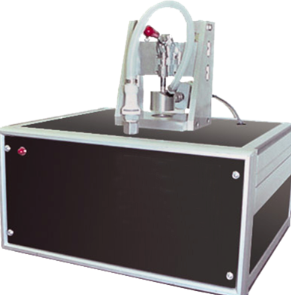- Qinsun Instruments Co., Ltd.
- Tell:+86-21-6780 0179
- Phone:+86-17740808215
- Address:No. 2578 Minhang District Gu Dai Road, Shanghai
- Contact:Mr. Li
- QQ:846490659
(Quality inspection) Porosity meter

Product Introduction
The porosity meter (quality inspection) is a capillary flow porosity meter combined with a special design. This instrument is characterized by easy operation, fewer operators required, ease of use, less experimental time required, compact structure, and minimal maintenance.
Operating principle: Place a completely wet sample in the sample chamber, seal the laboratory, and allow gas to flow behind the laboratory sample and reach a sufficient pressure value for the fluid to perform capillary movement through the largest diameter hole. This is the bubble point pressure, which increases in small increments. Measure the fluid until the hole is filled with fluid. This fluid version pressure data is generated using a dry sample, and the results are used to calculate pore parameters and pore distribution.
Product application
The unique characteristics of this instrument, especially its ability to quickly generate highly reproducible data, make it very suitable for quality control and process control operations. These uses of this instrument can be used in many industries.
Applicable industries:
Automotive manufacturing, battery separators, ceramics, filtration, geotextiles, non-woven fabrics, chemicals, pharmaceuticals, textiles
Product features
1. Fully automatic and easy to use, operators only need to intervene for very little time, and very few operators are needed.
2. Each experiment only takes a few minutes, making it an ideal device for quickly generating reproducible data.
3. Diversification of sample shapes and sizes.
technical parameter
Project parameters
Flow rate reaches 200SLPM
A reading with a pressure accuracy of 0.15%
Maximum pore size detection 150 μ M (water), 150 μ M (testing liquids: porewick, silwick, gaslwick)
Sample size with a diameter of 0.25 '-2.5' and a thickness ranging from μ M to 1 "(2.5cm)





